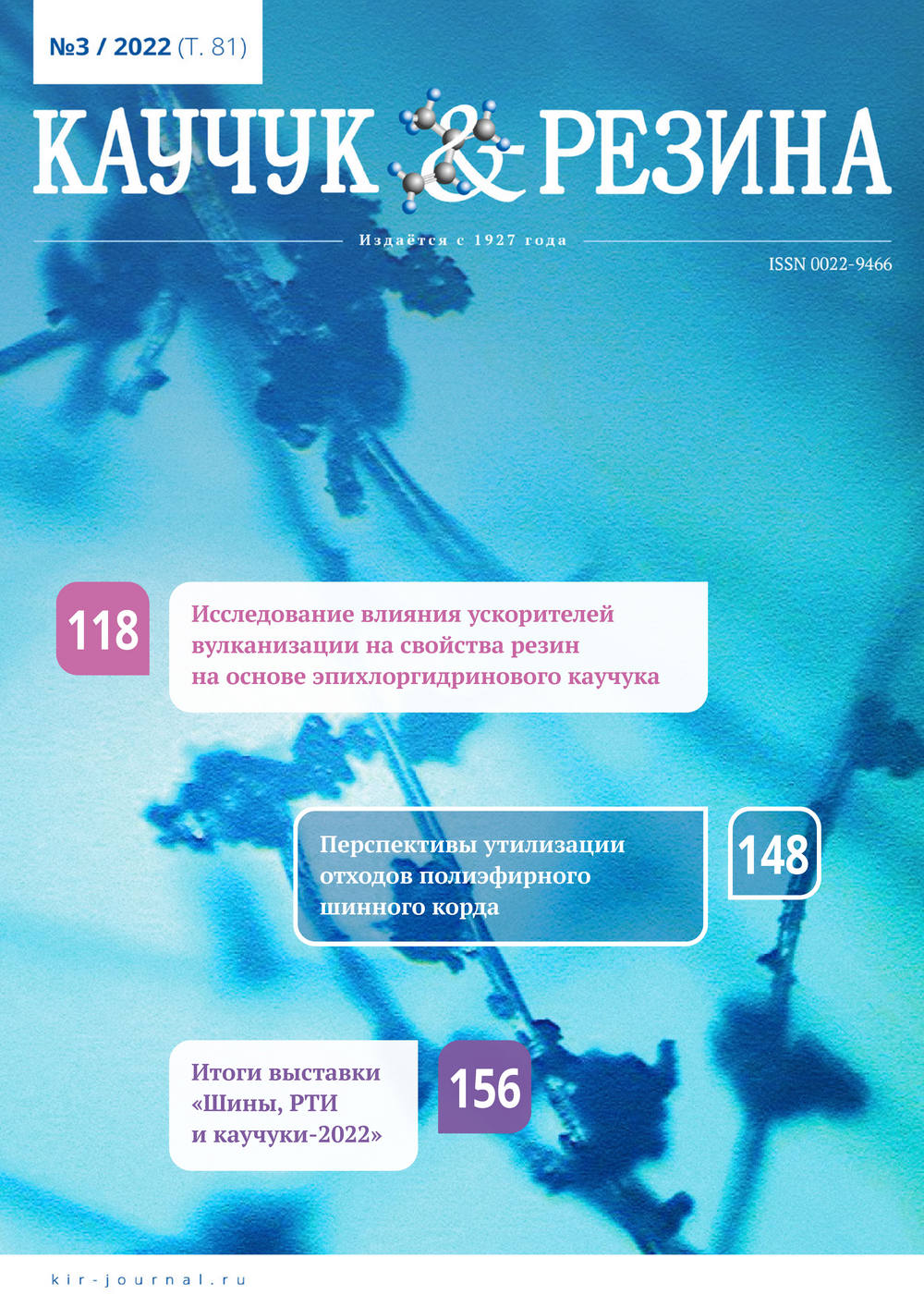Investigation of the Effect of Vulcanization Accelerators on the Properties of Vulcanized Rubbers Based on Epichlorohydrin Rubber
Published 2022-07-24
How to Cite
Abstract
The influence of vulcanization accelerators on the properties of vulcanized rubbers based on epichlorohydrin rubber of the Hydrin T6000
brand has been investigated. A sulfur vulcanizing group (SV) with double and triple accelerator systems was used. The thiuram system
(TSU) contains 1,5 wth 2-mercaptobenztiazole (captax) and 0,5 wth tetramethylthiuram disulfide (thiuram); the guanidine system (GSU)
contains 1,5 wth 2-mercaptobenztiazole (captax) and 0,5 wth N,N’-diphenylguanidine; thiuram-guanidine system (TGSU) contains 1,5
wth 2-mercaptobenztiazole (captax), 0,5 wth tetramethylthiuram disulfide and 0,5 wth N,N’-diphenylguanidine. The tangent of the angle
of mechanical losses (tgδ) at frequencies from 0,016 to 2 Hz at a temperature of 60 °C and a deformation amplitude of 1°, as well as the storage
modulus G', loss modulus G", and vulcanization characteristics, were determined on a rotor-free analyzer of the recyclability of rubbers RPA
2000 by Alpha Technologies (USA). The study of physical and mechanical parameters (GOST 270-75) and the coefficient of frost resistance
under tension (GOST 408-78) were carried out on a UTS testing machine (Germany). The abrasion resistance of rubbers was evaluated by
the method of determining the abrasion resistance in accordance with GOST 23509-79 on the friction machine AR-40 (Russia). The degree
of swelling in the medium of the standard working fluid SWF-3 was determined according to GOST-74. The indicators of the cross-links density
of vulcanizates are calculated using the Flori-Rener equation based on the data of equilibrium swelling in toluene at a temperature of 30 °C.
It is shown that vulcanizates, as for other rubbers, differ in the nature and density of cross-links (CL). Thus, the introduction of TSU leads to the
formation of a denser cross-links due to mono-, disulfide CL, and the introduction of GSU leads to the formation of polysulfide CL. It has been
established that the introduction of TSU allows to realize a synergistic effect – the formation of CL with different sulfides, which leads to an
improvement in such important operational properties as frost and aggressive resistance of rubbers. The physical and mechanical parameters
meet the normative values required for most rubber-technical products.

